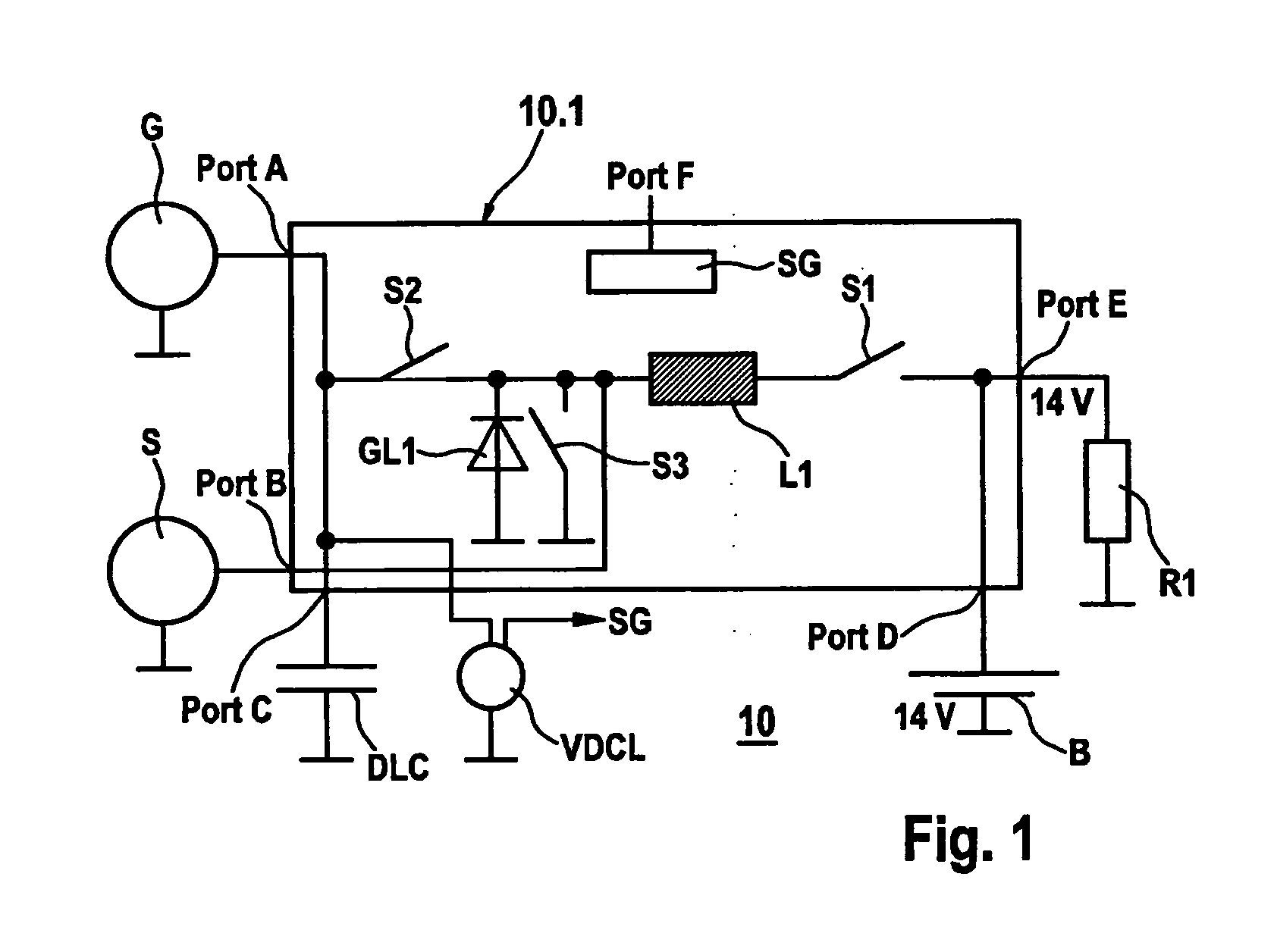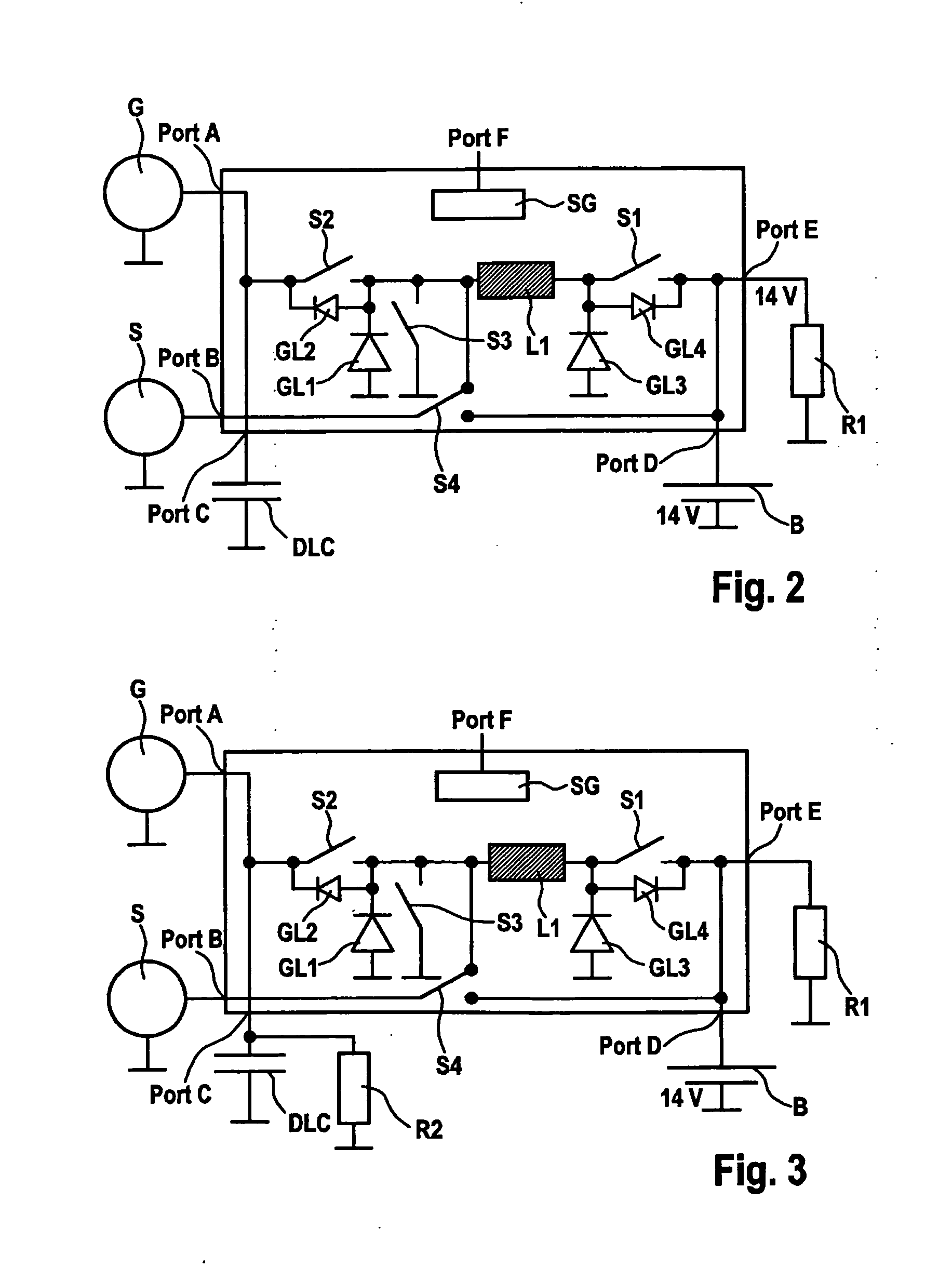Onboard network for a vehicle having a start-stop system
a technology of start-stop system and start-stop network, which is applied in the direction of engine starters, electric control, instruments, etc., can solve the problems of often at least temporarily failing infotainment devices, devices which do not contain buffer units, and disadvantageous effects on the electrical and electronic components of the onboard network, so as to reduce the internal resistance, shorten the service life of the battery, and increase the stress on the battery
- Summary
- Abstract
- Description
- Claims
- Application Information
AI Technical Summary
Benefits of technology
Problems solved by technology
Method used
Image
Examples
Embodiment Construction
[0021]FIG. 1 shows a simplified block diagram of an onboard network 10 for a vehicle having a start-stop system. The essential components of an onboard network 10 for understanding the present invention are shown. Onboard network 10 includes a generator G and a starter S. At least one battery B and at least one capacitor DLC are provided as energy storages for storing an electrical charge. Capacitor DLC is preferably a capacitor having large capacitance, in particular a double-layer capacitor. Resistor R1 represents electrical consumers of the onboard network. As is typical in standard onboard networks, generator G, starter S, battery B, capacitor DLC, and resistor R1 are connected via one of their connection lines to the ground terminal of the onboard network. The free terminal of generator G is connected via port A to the first terminal of a switch element S2 and the free terminal of capacitor DLC, which is applied to port C. The free terminal of starter S is connected via port B ...
PUM
 Login to View More
Login to View More Abstract
Description
Claims
Application Information
 Login to View More
Login to View More - R&D
- Intellectual Property
- Life Sciences
- Materials
- Tech Scout
- Unparalleled Data Quality
- Higher Quality Content
- 60% Fewer Hallucinations
Browse by: Latest US Patents, China's latest patents, Technical Efficacy Thesaurus, Application Domain, Technology Topic, Popular Technical Reports.
© 2025 PatSnap. All rights reserved.Legal|Privacy policy|Modern Slavery Act Transparency Statement|Sitemap|About US| Contact US: help@patsnap.com



